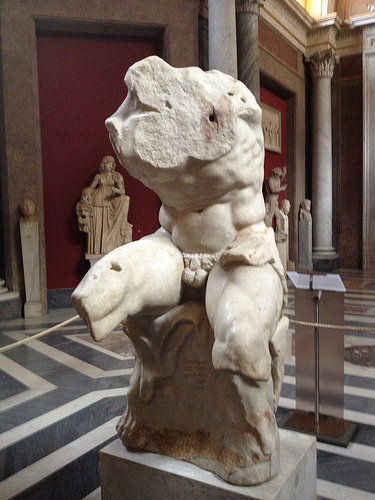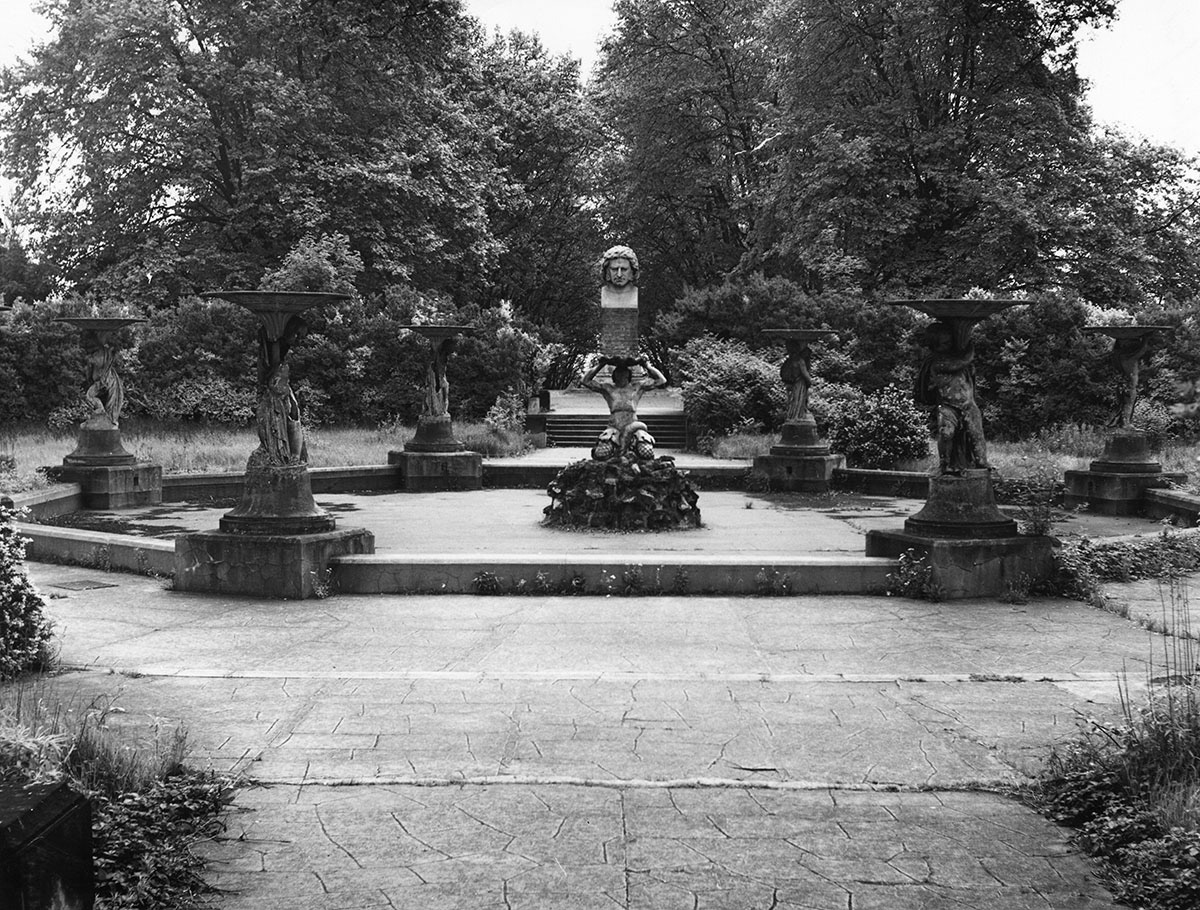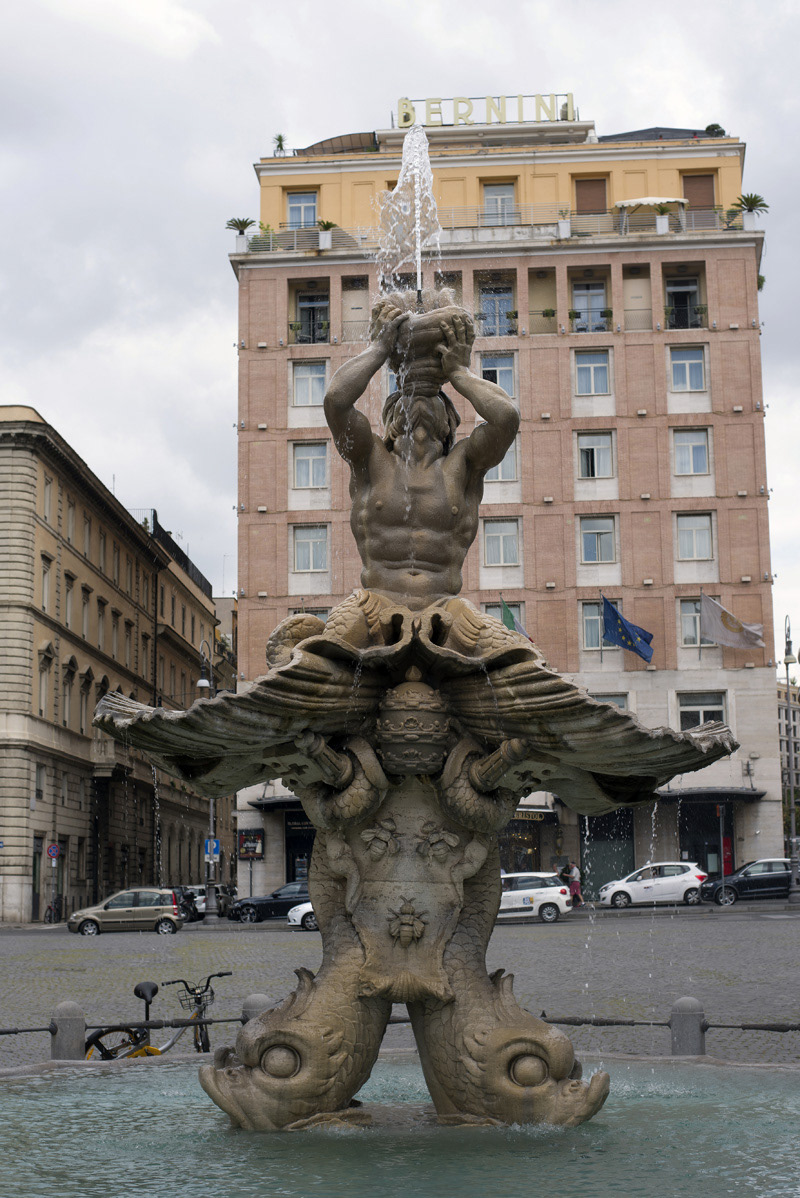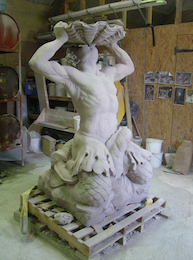by Patrick Sweeney

The Belvedere Torso, Vatican Museum, Rome. Image - Clockchime

A version of John Bell's Triton in Crystal Palace Park, undated. Image - Architectural Press Archive / RIBA Collections

Bernini's Triton Fountain, Rome. Image - Web Gallery of Art
One of the great turning points in the history of art was the transition from drawing the human figure by outline to drawing by internal modelling. This means that our comprehension of the form does not depend so much on reading the outline but on the way the light and shade over the surface of the body is articulated to express its volume and shape. In the ancient world this is known as mature classical form, most fully seen in The Belvedere Torso in the Vatican museum, possibly a copy of an original from the 2nd century BC. (top left)
Discovered in the 1430s the Belvedere Torso inspired Renaissance artists like Michelangelo and was highly developed in the Baroque period by Gianlorenzo Bernini. It was magnificently expressed by Bernini's Triton fountain statue in Rome, where the Triton raises his arms and blows a water jet into the air through a conch shell. (top right)
This advance in visual intellegence was reflected in what was once a beautiful fountain at Crystal Palace featuring a Bernini inspired Triton blowing through a broad scallop shell. The illustration attached (top centre) shows a version of the same statue by John Bell (1812-95) now in storage but formerly at the Radcliffe Infirmary in Oxford. John Bell was a highly popular Neoclassical sculptor, creating works for both the Great Exhibition of 1851 and for the gardens of Crystal Palace, and was much influenced by the work of the more famous John Flaxman (1755- 1826) of the previous generation.
John Bell's Crystal Palace Triton uses the strong surface musculature we associate with Bernini to define its form while at the same time using a dramatic posture so typical of Baroque and Neoclassical work. The result is a powerful image which, placed at the centre of an octagonal pool, with classical figures at each corner, was designed to increase the richness of the visual experience. (bottom left) Set in the context of the Crystal Palace gardens, it must have appeared opulent and a feast for the eyes, and as the top photo on previous page shows, a sense of gravity and dignity was given by the placement of the Paxton monument in the background.
The image from a catalogue of the time (bottom right) gives an idea of how the Triton was intended to be seen, with a jet of water rising high into the air.

John Bell's Triton in storage at the Radcliffe Infirmary, now part of the University of Oxford.
![A Selection of Vases, Statues, Busts, &c. from Terra-Cottas. [Plates, with an introduction.] John Marriott BLASHFIELD London : John Weale, 1857. Page 146.](https://cdn.myportfolio.com/30f9b8a4-9f61-435d-b336-2a795053b2aa/eb7eb29b-bab0-477f-9564-1d6e2cfff323_rw_1200.jpg?h=826595ab53539bae49d21591059a962f)
